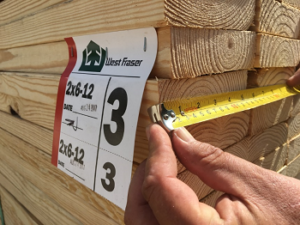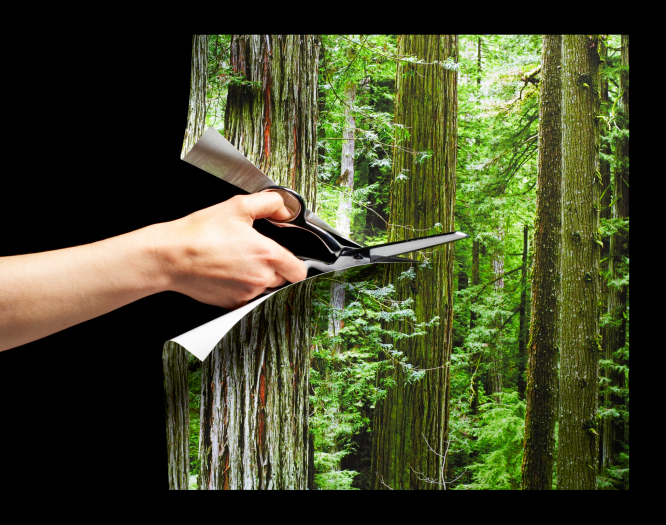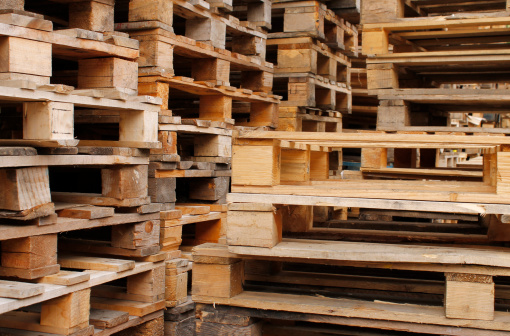Nominal and Actual Sizes Defined
There is often confusion with the average consumer, who doesn’t normally work with wood, when referring to the actual or nominal size of a piece of lumber. Typically, when buying lumber, whether it’s hardwood or softwood, it’s necessary to look at the thickness, as well as the width and the length of the board, to determine what will work in any application. Board lengths typically come in 2 foot increments starting at 8 feet and running to 24 feet. The length of a board is often within ¼” of the desired dimension. As an example, an eight-foot board will be no shorter than ¼ shy.” So, length isn’t really the problem when discussing nominal and actual sizes of the boards. The sticking points are the thickness and width. This is where we will focus our attention for the purposes of this article.
 The “nominal” size of a piece of lumber is typically what’s referred to by the supplier. Often in a retail hardware store a softwood board is advertised as a “2×6.” That is the nominal thickness and width. The “actual” size of the advertised “2×6” piece of lumber is “1-1/2×5-1/2.” The nominal size refers to the original state of the board before secondary processes have occurred. These processes are kiln drying and/or surfacing of the rough-sawn boards that come from the “green” sawmill. Each of these secondary processes reduces the thickness and width, through shrinkage or surfacing, to gain uniformity for selling to the consumer.
The “nominal” size of a piece of lumber is typically what’s referred to by the supplier. Often in a retail hardware store a softwood board is advertised as a “2×6.” That is the nominal thickness and width. The “actual” size of the advertised “2×6” piece of lumber is “1-1/2×5-1/2.” The nominal size refers to the original state of the board before secondary processes have occurred. These processes are kiln drying and/or surfacing of the rough-sawn boards that come from the “green” sawmill. Each of these secondary processes reduces the thickness and width, through shrinkage or surfacing, to gain uniformity for selling to the consumer.

Now that we’ve defined nominal dimensions and explained the reason they aren’t actual in size, things get really confusing. If you’re buying softwood, there is one set of rules. If you’re buying hardwood, there is another. Taking that a step further we, as wood packaging producers use a mix of low-grade materials, mixing in both green and dried materials.
Softwood Dimensions
Softwoods are typically referenced using the nominal thickness by the nominal width. Thus, at the retailer, you’ll see dimensions for kiln-dried pine listed as 1×4, 1×6, 2×4, 2×6, or 2×8. There are other sizes that may be available, but these five are the most common. Table 1 illustrates the nominal sizes and the actual sizes of softwood kiln-dried materials. These softwoods are most commonly categorized as Southern Yellow Pine (SYP), Spruce/Pine/Fir (SPF) or Douglas Fir.
| Actual | Nominal | Actual | Nominal | Actual | Nominal | Actual | Nominal | Actual | |
| 1×4 | 3/4×3-1/2 | 2×4 | 1-1/2×3-1/2 | 4×4 | 3-1/2×3-1/2 | ||||
| 1×6 | 3/4×5-1/2 | 2×6 | 1-1/2×5-1/2 | 4×6 | 3-1/2×5-1/2 | 6×6 | 5-1/2×5-1/2 | ||
| 1×8 | 3/4×7-1/4 | 2×8 | 1-1/2×7-1/4 | 4×8 | 3-1/2×7-1/4 | 8×8 | 7-1/4×7-1/4 | ||
| 1×10 | 3/4×9-1/4 | 2×10 | 1-1/2×9-1/4 | ||||||
| 1×12 | 3/4×11-1/4 | 2×12 | 1-1/2×11-1/4 |
If you’re buying softwood products in a ‘green’ state or unfinished state, the “nominal” size will typically be the actual size. Over the course of the last century, the actual dimensions have become thinner. The sizes in Table 1 are currently the recognized standards in the United States.
Hardwood Dimensions
Keep in mind that hardwood takes much longer to mature than softwood, so yield is typically very critical to the hardwood mill. The hardwood standard uses fractions when looking at thickness and, in some cases, the width of boards. The common size thicknesses list at 4/4, 5/4, 6/4, 8/4, 12/4, and 16/4. The closest logical reason I could find for using fractions when discussing hardwood thicknesses comes from an article by Shannon Rogers – What’s With the Fractions? Rogers says “It seems the quarter increment became the lowest logical denominator over time as standardization became more necessary with national distribution. The “quarter” refers to the stops on the log carriage that slide the log over and lock in the thickness of the resulting board. With ¼” being as close to the standard as practical, these stops were set up to mirror that, and when the sawyer bumped the log carriage over to the fourth quarter, he ended up with an approximately 1” thick (or 4/4”) board.” The accuracy of this statement is anyone’s guess, but it’s as close to a good explanation as any I’ve read.
Widths will vary in hardwood production, mostly because the consumer doesn’t need a standard width. Since your head is already about to explode with too much information regarding this point, let’s drop the issue of board width, and focus instead on thickness while discussing hardwood dimensions.
Table 1 illustrates the differences between nominal and actual kiln-dried hardwoods. We need to understand that “rough” is the state of the lumber at the “green” sawmill. A hardwood board can be surfaced on one side (S1S) or two sides (S2S). If the board is surfaced, the overall thickness will be diminished. Hardwood species can include some of the following, beech, birch, cherry, hickory, maple, oak, and poplar.
| Rough | Nominal | Actual Sizes | ||
| Inches | ¼ Fractions | Green | S1S | S2S |
| ½ | ½ | 3/8 | 5/16 | |
| 5/8 | 5/8 | ½ | 7/16 | |
| ¾ | ¾ | 5/8 | 9/16 | |
| 1 | 4/4 | 1-1/8 | 7/8 | 13/16 |
| 1-1/4 | 5/4 | 1-3/8 | 1-1/8 | 1-1/16 |
| 1-1/2 | 6/4 | 1-5/8 | 1-3/8 | 1-5/16 |
| 2 | 8/4 | 2-1/8 | 1-13/16 | 1-3/4 |
| 3 | 12/4 | 3-1/8 | 2-13/16 | 2-3/4 |
| 4 | 16/4 | 4-1/8 | 3-13/16 | 3-3/4 |
Understanding the Difference
Softwoods are typically used in the construction industry, so the nominal and actual sizes are tailored to that industry’s needs. The fractions used in the hardwood industry are more critical to the hardwood mill, as yield is more important to hardwood producers than the end users, which are typically furniture, cabinetry, and flooring manufacturers. Those of us in the industrial-use sector get the best of both worlds. As stated earlier, pallet and box companies use softwood and hardwood depending on the customer needs. We also buy both green- and kiln-dried materials, again, depending on customer needs and, often, price point.
What Does All This Mean to You?
Those of us in the wood industry understand the terms used when dealing with boards. As a consumer of wood packaging, you should always ask for the actual size of a board or the boards that will be used for the pallet or box. Wood species can also be an indicator of what you’re going to get. Drawings can be very helpful. Using a supplier that has access to the Pallet Design System (PDS) or a CAD program such as SolidWorks is essential for providing depth and analysis from an engineering perspective. Know that you’re paying for the material as your supplier paid for it, but that you should be referencing supporting documents to confirm what you’re actually getting. If your PDS says you’re getting 1-1/2×3-1/2” stringers and you’re actually getting 1-1/8×3” stringers, you likely have an issue with your supplier that needs to be discussed.




